Disclosure: This article contains affiliate links. We may earn a commission from purchases at no extra cost to you, which helps our travel content.
The morning fog clings to the Appalachian foothills as I adjust my aperture, attempting to capture the ethereal quality of light filtering through the autumn canopy. Beckley, West Virginia isn't on most photographers' bucket lists, but that's precisely why I've come. After years documenting wildlife across five continents, I've developed an appreciation for places where human industry and nature engage in their complicated dance. Here in coal country, that relationship is written into the very landscape—a visual storyteller's dream canvas waiting to be explored through the viewfinder.
The Exhibition Coal Mine: Where Light Meets Shadow
Descending into the Exhibition Coal Mine feels like entering another world—one where light and shadow play by different rules. As a cinematographer, I'm immediately drawn to the dramatic contrasts: the pitch blackness pierced by miners' lamps, the gleaming coal seams against rough-hewn rock faces, the weathered hands of our guide against the cold metal of vintage equipment.
The underground temperature hovers around 14°C year-round, creating visible breath that catches the light beams in ethereal ways. For photographers, this presents both challenge and opportunity. I switch to my prime lens to capture maximum light while maintaining sharpness in these difficult conditions. The wide aperture allows me to work without flash, preserving the authentic atmosphere and avoiding the harsh reflections that would destroy the subtle play of shadow essential to conveying the miners' experience.
What strikes me most is how the mine becomes a metaphor for photography itself—the careful balance between darkness and illumination, the search for meaning in what remains hidden, the stories revealed only through patient observation. Each chamber offers distinct compositional possibilities, from the geometric patterns of support beams to the intimate portraits of tools abandoned mid-task decades ago.

💡 Pro Tips
- Set your camera to a higher ISO (1600-3200) but use noise reduction in post-processing
- Bring a small tripod or monopod for the longer exposures needed underground
- Consider bracketing your exposures to capture both shadow detail and highlights
Coal Camp: Framing America's Industrial Heritage
The reconstructed coal camp adjacent to the mine offers a photographer's paradise of historical authenticity. Unlike many heritage sites that feel sanitized for tourists, Beckley's coal camp retains a lived-in quality that translates beautifully to the frame. The superintendent's house, with its relative opulence, stands in stark visual contrast to the miners' humble quarters—a spatial representation of the social hierarchy that defined these communities.
I spend hours capturing the interplay of autumn light through the windows of these simple structures, watching how the warm afternoon glow transforms utilitarian objects into art. My variable ND filter proves invaluable here, allowing me to control exposure while maintaining the golden quality of fall light that makes this season ideal for photography in Appalachia.
For those looking to document human stories through place, the coal camp provides endless compositional opportunities. The schoolhouse with its neat rows of desks, the company store with its meticulous ledgers, the church where miners sought solace—each building offers a different facet of the community's experience. I find myself drawn to the small details: a child's toy left on a porch, tools hanging on workshop walls, the pattern of wear on doorsteps from generations of coal-dusted boots.

💡 Pro Tips
- Visit in late afternoon when the light becomes warmer and more directional
- Look for compositional contrasts between the superintendent's home and workers' quarters
- Include human elements (tools, personal items) to bring scale and emotion to architectural shots
New River Gorge: Contextualizing Coal Country
No photographic exploration of Beckley would be complete without venturing to nearby New River Gorge National Park. The relationship between this stunning natural landscape and the region's industrial heritage creates a visual narrative that's impossible to ignore. The iconic steel arch bridge spanning the gorge serves as both literal and metaphorical connection between nature's grandeur and human engineering.
As a wildlife documentarian, I'm drawn to the ecological recovery story unfolding here. Areas once devastated by mining are gradually being reclaimed by forest, creating fascinating juxtapositions of industrial ruins and resurgent nature. My telephoto zoom lens allows me to compress these elements visually, creating compositions where abandoned mining structures appear to be embraced by the surrounding wilderness.
The autumn palette here is simply extraordinary. The New River cuts a teal-blue ribbon through a canvas of crimson, amber and gold foliage. For landscape photographers, the Grandview overlook provides the classic shot, but I prefer hiking to lesser-known vantage points like Beauty Mountain for more unique perspectives. Dawn brings mist rising from the river, creating ethereal conditions reminiscent of traditional Chinese landscape paintings—a gift for photographers willing to rise before the sun.

💡 Pro Tips
- Use a polarizing filter to cut glare on the river and enhance foliage colors
- Incorporate the bridge as a scale element in wider landscape shots
- Visit at dawn when mist often rises from the river, creating dramatic atmospheric effects
Portraits of Coal Country: Faces and Places
The most compelling images I've captured in Beckley aren't of places but of people—the descendants of miners who maintain a deep connection to this land and its industrial heritage. With permission, I've photographed multi-generational mining families, retired miners with coal dust permanently etched into their skin, and young people navigating the complex legacy of a region in transition.
For portrait work in this environment, I rely on my portrait lens which delivers beautiful bokeh while maintaining the environmental context so crucial to these stories. The fall light in West Virginia is particularly flattering for portraiture, with its softer quality and directional character that sculpts faces with natural shadows.
The Beckley Coal Mine Museum offers opportunities to photograph living history interpreters in period-appropriate settings. These individuals—many with personal connections to mining—provide both visual interest and invaluable contextual information. I find that spending time in conversation before raising my camera yields more authentic expressions and often reveals locations or stories I might otherwise have missed.
For photographers interested in documentary work, the annual Beckley Miner's Day celebration in October presents rich opportunities for capturing cultural traditions, from coal-shoveling competitions to demonstrations of traditional mining techniques. The authentic community spirit makes for compelling visual storytelling beyond the typical tourist experience.
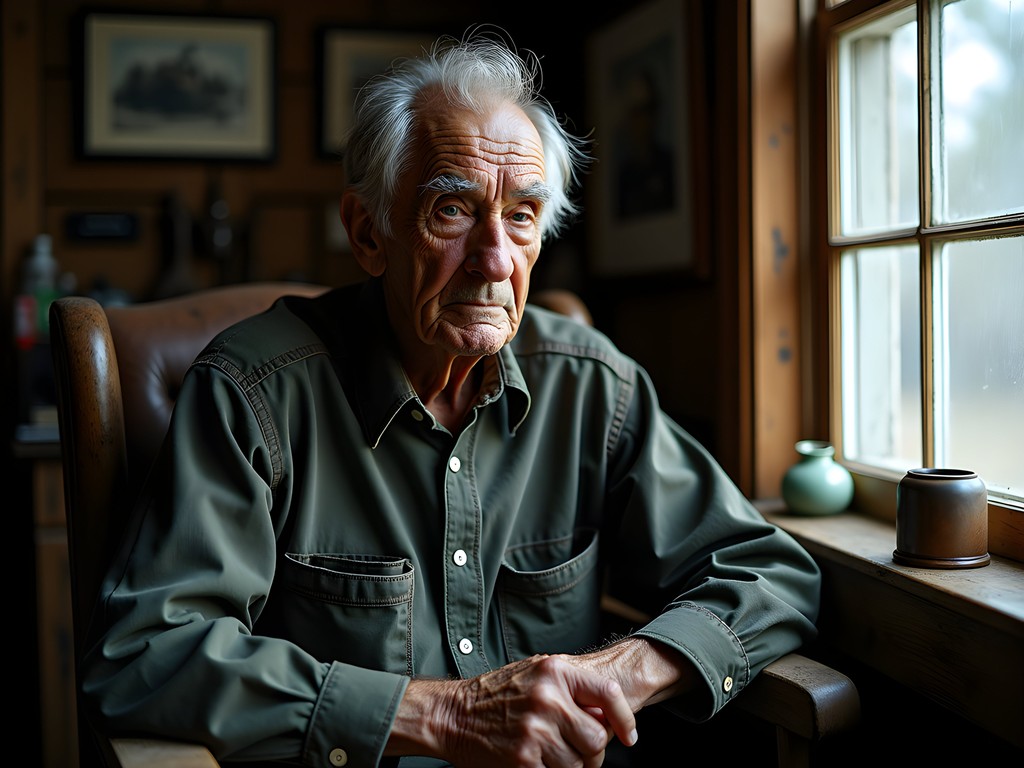
💡 Pro Tips
- Always ask permission before photographing individuals, especially in more intimate settings
- Capture environmental portraits that show the relationship between people and place
- Record audio notes of stories shared by locals to pair with your images later
Final Thoughts
As I pack away my camera backpack on my final evening in Beckley, I find myself reflecting on what makes this unassuming town such a compelling subject. It's not just the visual richness—though that's abundant—but the layered narrative of human perseverance, environmental impact, and cultural identity that gives these images their power. The best photography tells stories that matter, and Beckley's story is America's story in microcosm: the complex relationship between industry and environment, prosperity and sacrifice, past and future.
For photographers willing to look beyond the obvious, Beckley rewards with authentic moments and scenes increasingly rare in our homogenized world. The fall season transforms this coal country into a canvas of extraordinary beauty, where the harsh realities of industrial history are softened—but never obscured—by nature's paintbrush. Whether you're documenting the historical sites, capturing the dramatic landscapes, or creating portraits of the people who call this region home, you'll leave with images that challenge, question, and ultimately, illuminate. And isn't that what photography at its best should do?
✨ Key Takeaways
- Beckley offers unique photographic opportunities where industrial heritage meets natural beauty
- Fall provides optimal lighting conditions and dramatic color contrasts for both landscape and documentary photography
- The Exhibition Coal Mine and reconstructed camp are rare opportunities to photograph preserved industrial history
- Local connections and conversations lead to more authentic and meaningful images
📋 Practical Information
Best Time to Visit
Mid-October for peak fall foliage
Budget Estimate
$300-500 for a weekend (accommodations, food, and attraction fees)
Recommended Duration
2-3 days
Difficulty Level
Moderate (Some Underground And Hiking Photography Requires Specialized Techniques)


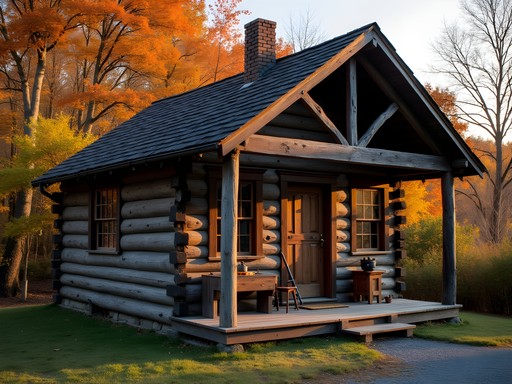
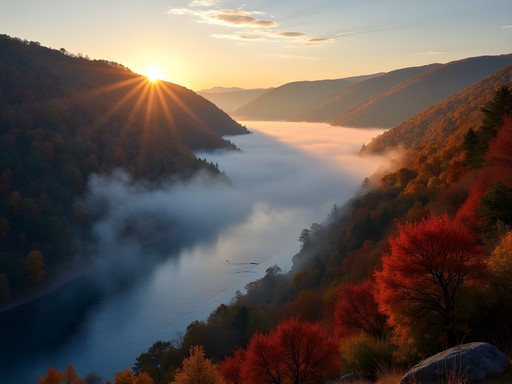
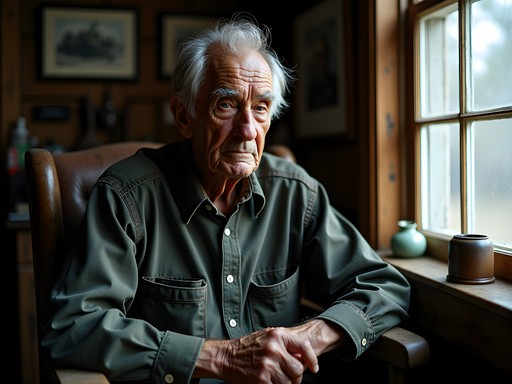




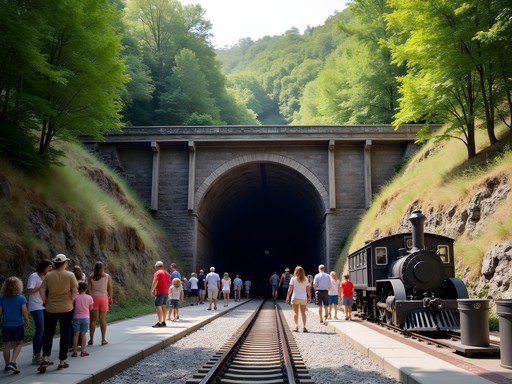
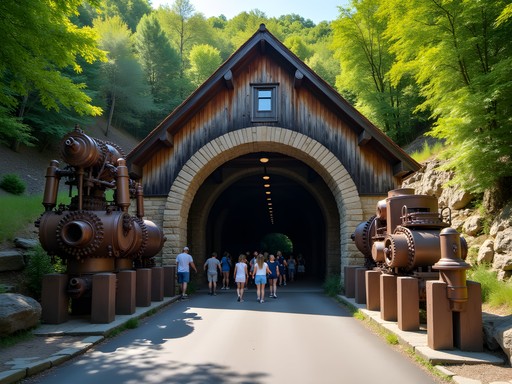




Comments
Olivia Sanchez
There's something so powerful about photographing places that most tourists overlook. My grandfather was a coal miner in Kentucky, and I remember how his hands were permanently stained with coal dust even years after retirement. Last time I visited the region, I tried capturing some similar scenes but struggled with the lighting contrasts. Your section on 'Where Light Meets Shadow' really resonated with me - both technically and metaphorically. It's a perfect description of Appalachia's complex relationship with the coal industry. Have you considered expanding this project to other mining communities across the region?
Avery Gordon
Olivia, thank you for sharing that personal connection. Those generational ties to mining run so deep throughout Appalachia. And yes, I'm actually planning a broader series covering Pennsylvania through Kentucky. There's so many stories still waiting to be told through these landscapes.
Nicole Russell
That expanded project sounds amazing! Can't wait to see it!
coffeediver
Wow, never thought coal country could look so beautiful. Adding this to my travel list!
backpackway
If anyone's planning to visit, try to time it for October like the author did. The fall colors against those industrial structures create an amazing contrast. I went in summer and while it was still interesting, it didn't have that same moody atmosphere that these photos captured. Also worth bringing a good tripod for the mine tour - it's dark down there!
coffeeadventurer
Just got back from a road trip through WV and wish I'd seen this post before going! We stopped at New River Gorge but completely missed the Exhibition Coal Mine. Your photos of the coal camp houses are incredible - they really show how tough life must have been. Did you try any local food spots in Beckley? We found this amazing little diner with the best biscuits and gravy I've ever had, but I can't remember the name now.
Nicole Russell
Avery, this is EXACTLY the kind of content I live for! I visited Beckley last fall and was completely unprepared for how emotionally moving the Exhibition Coal Mine would be. Did you get a chance to talk with any of the former miners who sometimes work as guides? Their stories added so much depth to my understanding of the place. Your photos capture that perfect balance of historical weight and natural beauty that makes this region so special. Can't wait to see where your camera takes you next!
Avery Gordon
Thanks Nicole! Yes, I had the privilege of speaking with Bill, who worked in the mines for 32 years. His insights really shaped my approach to the photography. There's something about hearing history directly from those who lived it.
vacationhero
Those miner portraits are haunting. Really captured the soul of the place.
photoclimber
What camera settings did you use for those low-light shots in the coal mine? They came out incredible!
Avery Gordon
Thanks! I shot most of the mine interiors at ISO 3200, f/2.8, with a shutter speed between 1/30 and 1/60. Having a good stabilized lens made all the difference down there.
photoclimber
Awesome, thanks for sharing! Might need to upgrade my gear before trying something like this.
Timothy Jenkins
Avery, your post brought back memories of my trip to Beckley last autumn. The way you've captured the contrast between the industrial remnants and natural beauty is spot on. I found the Coal Camp particularly moving - those weathered wooden structures tell such powerful stories. Did you get a chance to chat with any former miners? I was fortunate enough to meet Mr. Harrison, who worked the mines for 40 years and shared incredible stories that completely transformed how I photographed the site. His perspective on the "company store" building gave me a whole new appreciation for what those walls had witnessed. For anyone planning a visit, I'd recommend scheduling an extra day just for the New River Gorge area - the morning light there creates dramatic shadows that are perfect for photography.
Avery Gordon
Timothy, you're absolutely right about the New River Gorge lighting! I didn't meet Mr. Harrison, but I did speak with a woman named Eleanor whose father and grandfather both worked the mines. Her stories definitely influenced how I approached photographing the personal items in the museum. Those small details - the lunch pails, the headlamps - suddenly carried so much more weight.
Timothy Jenkins
Those personal connections make all the difference. By the way, for anyone struggling with the low light conditions in the mine, I found my night photography lens to be absolutely perfect for those conditions. Worth every penny for underground photography.
coffeeblogger
Those shots of the Exhibition Coal Mine are incredible! How did you handle the lighting challenges underground? I tried taking photos in a similar mine last year and they all came out terribly dark.
Avery Gordon
Thanks! It was definitely tricky. I used a tripod for most underground shots and kept my ISO around 1600-3200. The key was balancing the harsh spotlights with the natural darkness. Did you try any long exposures?
coffeeblogger
No tripod was my downfall! I was trying to handhold everything. Definitely bringing one next time. Did you use any special lens?
Avery Gordon
I mostly used a fast prime - f/1.8 50mm for the tighter shots. For the wider mine caverns, I switched to my 24-70mm f/2.8. The tour guides were super accommodating when I needed an extra minute for setup!
springlife
WOW!!! Just booked our family trip to Beckley after seeing this post! Can't wait to explore the Exhibition Coal Mine and New River Gorge! Your autumn photos are STUNNING! Did you hike any specific trails to get those gorgeous canopy shots? So excited!!!!!
Venture X
Premium card with 2X miles, $300 travel credit, Priority Pass